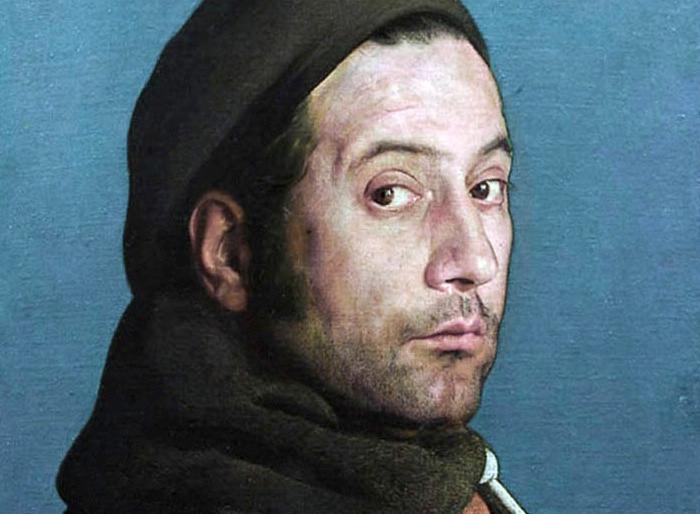Hans Holbein the Younger (1497–1543) was the greatest (although not the highest paid) portrait painter at the court of King Henry VIII.
He first moved to England from his native Germany in 1526, and came under the patronage of Sir Thomas More. More was a devout Catholic, which was awkward for Holbein, who had Protestant leanings due to the new and dangerous Lutheran ideas that were growing in Germany.
Nonetheless, no friction grew between Holbein and More during the two years of this, Holbein’s first stay in England. Returning to his wife and children in Basel in 1528, Holbein bought two houses, using some of the money he had earned from his very successful portrait business.
In 1532, he again left his family and moved back to England, this time under the patronage of Anne Boleyn and Thomas Cromwell, who introduced Holbein into Henry VIII’s court. There, he painted some of the most brilliant and influential portraits in the history of art.
Holbein, Step by Step
Holbein’s method of working was to set up a viewing apparatus and trace the outlines of his sitter’s face, using a device similar to the one drawn by Dürer, a German artist who was a generation older than Holbein (illustration 1).
Holbein would then lightly model the traced face with pencil and/or colored chalks, but leave the clothing as the simple outlines (illustration 2).
He then took this tracing, as well as some written color notes, back to his studio and painted the portrait from these. Recent examination of Holbein’s portraits has shown that he used some combination of egg tempera and oils as his painting medium, but it is not clear whether these two were combined in an emulsion, or painted consecutively.
Artists work with compositional systems: a poet might work within the Petrarchan sonnet form, the French ballade, or the sistina (among many others), and a musician might work in the sonata form, or in one of the several cyclical forms. With regard to color, a painter first decides on a value composition and follows this with a hue scheme.
Color has three aspects: hue, value, and chroma. Hue is what we generally mean when we say color—red, yellow-green, blue, etc., are all hues. Value is how dark or how light a color is, and chroma is how grey or how intense a color is.
Holbein used a value scheme that comprises a light-value focus (the face and collar) that is supported by a dark base (the clothing). This dark shape is further designed to surround the light-value face (using hair, hat, beard, shadow and sometimes even a straightforward dark outline). The whole of this is presented against a mid-value background (see illustration 3).
Next comes the choice of a hue scheme, which adapts itself to the value composition. These hue schemes are plotted on the color wheel (illustration 4). Those directly across from each other on the wheel are called complimentary colors, those not quite opposite each other are called near-complimentary, and so on. Illustration 3 shows that Holbein has used a complimentary scheme in this portrait: red-orange (the sleeves and the face) and a greenish-blue (the background).
Holbein Lives On
Holbein’s influence has been huge throughout the centuries.
In the 20th century, Pietro Annigoni (1910–1988) was one of the artists to be influenced by him; Annigoni’s Self Portrait of 1946 is an obvious example (illustration 5).
In spite of its being rejected many times by the Bond Street galleries in London in the 1950s because of the art establishment’s huge prejudice against realism in contemporary painting, this is the portrait that led to Annigoni’s commission to paint Queen Elizabeth II of England in 1954-1955 (illustration 6).
Like Holbein, Annigoni used a combination of egg tempera and oils for almost all his paintings except his frescoes. This oil-tempera is an emulsion and is similar to the one Holbein used. Tempera does not have to be applied in the medieval manner of fine brushstrokes (although it can be), but can be applied broadly and thickly, too.
There is a two-minute BBC film from 1961 viewable on YouTube. In it, we see Annigoni preparing his tempera and then painting with it.
M. John Angel is a professional artist and the Director of Studies at the Angel Academy of Art, Florence, in Florence, Italy. A selection of his works can be seen on the academy’s web site.
